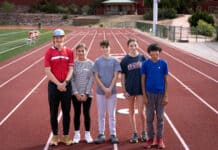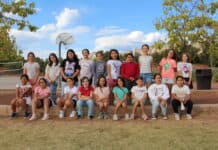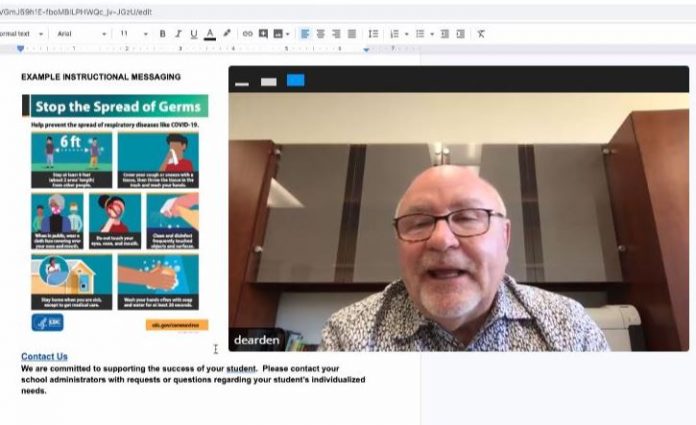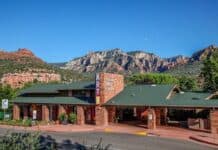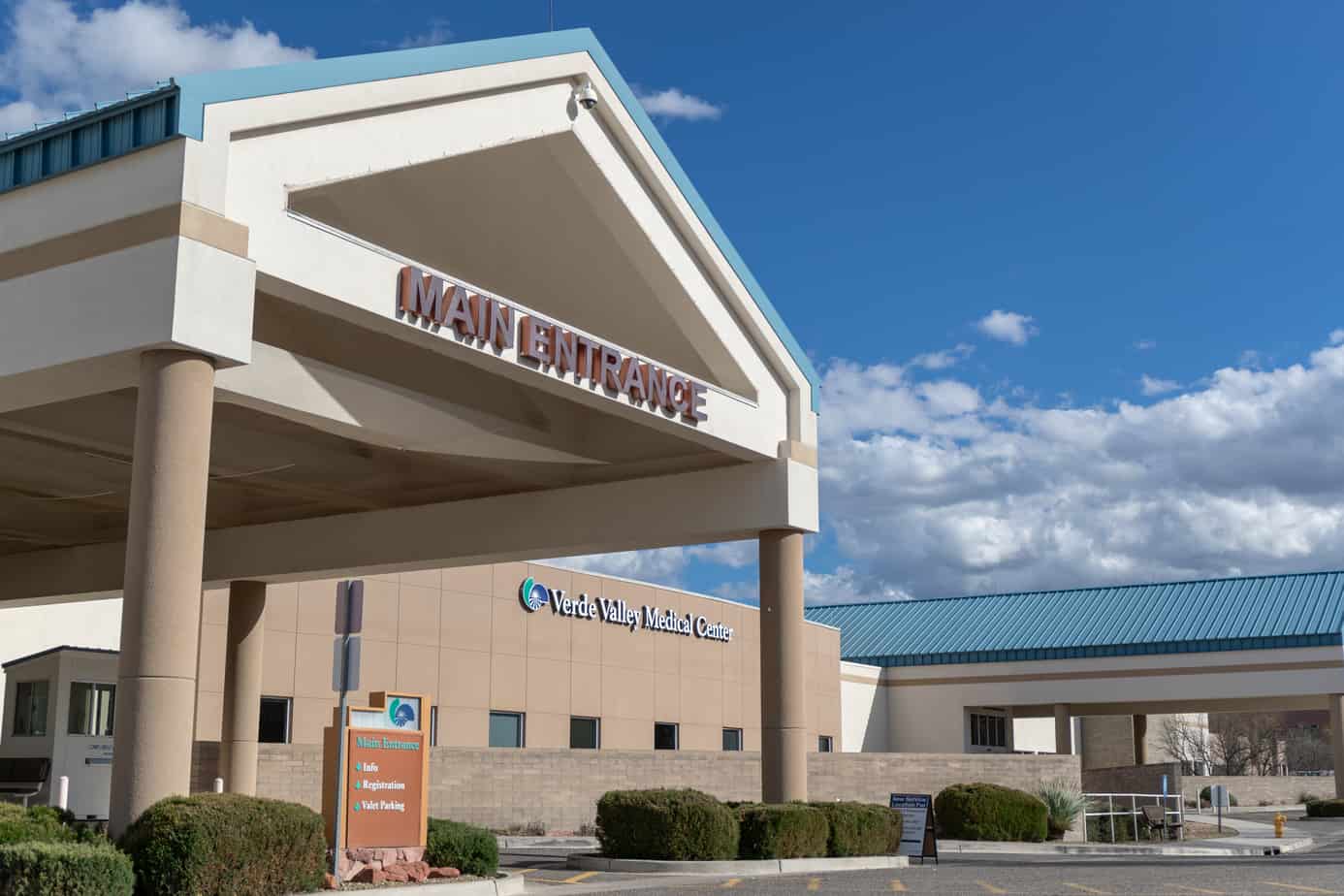Note: Due to Ariz. Gov. Doug Ducey’s June 29 ordinance, in-person school openings in Arizona have been delayed until at least Aug. 17. Sedona schools were originally planned to open Aug. 5.
Instead of rolling out of bed and clicking on a mouse to open class on a computer screen, as students have done since schools closed in March, hopes are high that area students will be able to actually walk through the school doors and sit at real desks in real classrooms with their peers and teachers when it reopens in August.
“We’re very optimistic based on the circumstances right now that we’ll be able to open as normal as possible,” SOCSD Superintendent Dennis Dearden said in a Zoom meeting with the school board on June 2. “We hope that if things don’t change that much we’ll be able to open in a fairly traditional manner with some guideline restrictions to keep staff and our students safe.
Reopening Scenarios
Dearden, who is also the principal of Sedona Red Rock Junior/Senior High School, met with the other Verde Valley superintendents to come up with possible reopening plans. Sedona schools will have three different scenarios as far as school openings
“We’re going to be providing several options in our plan in case something happens in terms of in the fall — or any part of the school year — that we’ll be prepared for that,” Dearden said. “We feel very confident that we will [be prepared.]
- Structure 1: Sees students going to campus as normal with social distancing precautions in place. Right now, due to the relatively low number of cases in Yavapai County compared to others in Arizona, the district plans to open with this structure in August.
- Structure 3: On the other end of the spectrum, if there were to be another sudden statewide shutdown, all students would be equipped to continue instruction virtually with no school days lost
- Structure 2: This would be a hybrid, with half of the students coming to school in person Monday and Tuesday, while the other half would view the class virtually, and then the students would switch on Wednesdays and Thursdays. On Friday all students would work at home. This scenario would come into play if the number of students on campus at a time needed to be drastically reduced but not at an emergency level.
New Guidelines
The new health and safety regulations specific to Sedona campuses won’t be finalized until after the school board meeting Tuesday, July 7, when the SOCSD Governing Board votes for or against the plan that was presented to them by the SOCSD leadership team during a June 16 work session over Zoom.
The SOCSD leadership team, including Dearden, Assistant Superintendent Deana DeWitt and eight other administrators making up all campuses, have been meeting since the closure trying to develop specific new procedures. In the last few weeks they met with various stakeholders like the PTA in order to get input for their draft document.
The plan was based on recommendations from the Centers for Disease Control and Prevention, the Arizona School Board Association and Arizona Department of Education’s 36-page document titled “Roadmap for Reopening Schools.”
“Our [Arizona] Superintendent of Instruction Kathy Hoffman developed a task force of a lot of people — parents, students, community members, superintendents around the state — to develop, really its guidelines that we can use,” Dearden said of the roadmap. “It’s pretty daunting, if you look at it. And there’s tons and tons of recommendations and there’s no way that we could implement all of those. The key is that they’re there for us and it’s a situation where it’s not a legal document — they’re not requiring us to do anything. In fact, they’re saying it’s up to each individual school. It’s local control — you’ve got to do what’s best for your own district.”
Some of the roadmap’s more extreme suggestions include student and staff temperature screenings multiple times a day, closing communal areas and installing physical barriers like partitions and sneeze guard.
“There will be some guidelines we’ll implement,” Dearden said at the board meeting. “And I have to tell you — as soon as you start implementing any guideline, things are not normal anymore.”
Dearden said that the parents he has talked to said they were excited for their kids to return to campus, but told him that if their kids had to return to a “prison-like setting,” they would rather keep them home.
With that in mind, the leadership team tried to balance enough new safety measures without them being overly burdensome.
Masks & Sanitation
Originally, the district planned to not make masks a requirement for students or teachers. Administrators said that many teachers who gave their input on this matter said that it would be hot and hard to teach wearing a mask all day.
However, the city decision to require masks on Tuesday, June 23, changed this. All children 5 or older will have to wear masks unless physically unable, and there will not be an exception for schools.
Before the order, Dearden was already working with Yavapai County Education Services in order to provide optional masks to those who wished to wear them. There is now a recommendation in the county budget to include funding for masks in all county public schools, but it is yet to be made official.
The district is also working on installing hand sanitizer stations in every classroom. Students that are old enough will be encouraged to get some before moving around the buildings.
The Sedona schools had many recommended sanitation measures already in place, including a ventilator that circulates new air into the classrooms every 24 hours and a method to quickly and effectively clean tabletops. Even still, Dearden said that the district custodians have been working hard over summer break and will continue to do so over the school year to bring the sanitation measures to “a whole different level.”
Looser Attendance Policy
The district is also figuring in ways to accommodate families that are still not comfortable with their kids returning in a physical manner in August.
Dearden and DeWitt said that Red Rock Academy, the district’s online school, which was already in place for alternative learning, will become an important factor next school year.
“What we’re hoping is that for those students whose families, for whatever reason — whether they’re high risk or have other concerns coming into the fall who feel like they need a virtual option, at least temporarily — we would like to capture those students and put them in our online learning environment,” DeWitt said. “So that’s going to be our intent moving forward, to expand that program as needed.”
Students who pass Red Rock Academy courses would still be on track to graduate on time and could come back in person when they feel comfortable.
In addition, perfect attendance won’t be promoted as heavily as before to encourage students to stay home if feeling sick.
Though things will most definitely look different this school year, district staff like SRRHS English teacher Briana Young said that the changes will be worth it.
“I’m nervous about the changes to come to our classrooms in August, but there’s nothing I wouldn’t do to protect my students and get to see them in person again
“I’m nervous about the changes to come to our classrooms in August, but there’s nothing I wouldn’t do to protect my students and get to see them in person again,” Young said.
POSSIBLE CHANGES
- A possible new bell schedule would have the first Sedona Red Rock High School class starting at 8:05 a.m. and the last one over by 2 p.m., while West Sedona School would modify its schedule to be from 8:30 a.m. to 2:30 p.m. This would reduce contact time and risk of exposure.
- At SRRHS, a six-period day could change to a seven-period day. The students would have six 50-minute periods, but period seven would be a prep time for teachers from 2 to 3:30 p.m.
- There might no longer be early release days to ensure instructional minutes are met.
- At WSS, the library might not be open as a special, but the time students spend at the other specials would increase.
- At WSS, students might not be allowed to use the playgrounds when school resumes.
- At SRRHS, the number of lunch periods could increase from two lunch periods to three, reducing the number of students that will be in the cafeteria at a time.
- More outside areas and tables may be available for students to have the options to eat lunch outside.
- Classrooms may be rearranged in a way that maximizes distancing. Extra bookshelves, tables and other “clutter” would be removed in order to make more space.
- At SRRHS, the computer lab could be closed for use.
- Instead of having a computer cart in each classroom, students could get to check out individual Chromebooks which they will then hold on to for the whole school year and can take home with them.
- Touch-free restroom entry and exits are planned.
- Classroom doors may be propped open to avoid contact with door handles. During transition times at SRRHS, exterior doors may also be propped open.
- Different routes within the schools and even outside routes may be implemented to avoid student proximity when transitioning to classes or specials.









